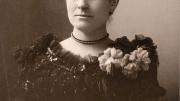As 21-year-old Williamina Paton Fleming steamed across the Atlantic toward Boston in November 1878, she had no idea how brightly the stars overhead would shine in her future. One of nine children of a Scottish craftsman and his wife, she already knew the cold reality of family survival. Her father had died when she was seven; at 14, she had become a student teacher to help support her mother and siblings. At 20, she had married a Dundee bank employee and widower, James Orr Fleming, 16 years her senior—who would abandon her and their unborn child shortly after her arrival in the United States. Despite it all, “Mina” Fleming would rise to a key position in Harvard’s astronomy program and be hailed as the nation’s preeminent woman astronomer.
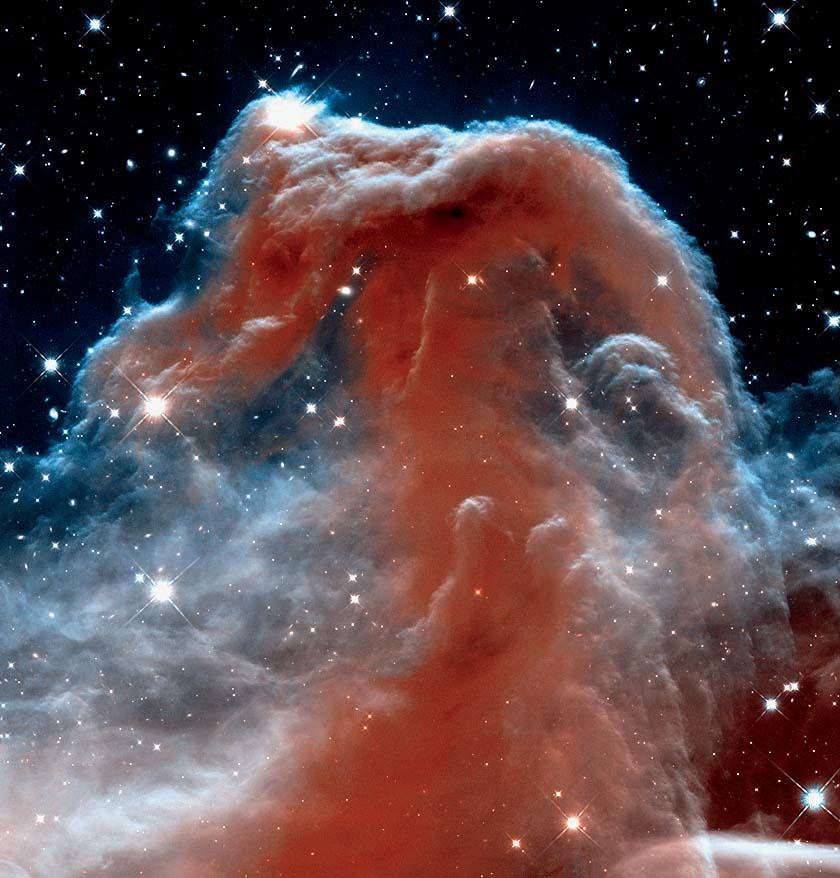
A 2015 Hubble Space Telescope infrared image of one of Fleming’s discoveries, the Horsehead Nebula in the constellation Orion
Image courtesy of NASA/ESA/Hubble Heritage Team
In mid 1879, she became a maid in the home of Edward C. Pickering, director of the Harvard College Observatory. (That she named her son Edward Charles Pickering Fleming reveals both the gravity of her situation and her gratitude to her employer.) Impressed by her vigor and lively intellect, Pickering gave her part-time clerical work and, in 1881, added her to the observatory’s permanent staff.
Fleming arrived at a fortuitous time. Pickering, who served 42 years as observatory director, sought to bring industry-inspired efficiencies to the exploration of the cosmos. His research protocol, aided by an 1886 bequest from the widow of New York amateur astronomer Henry Draper, swapped out the human eye for a camera at the operator’s end of the telescope. By night, Harvard astronomers photographed stars and nebulae; by day, specially trained office workers—“computers”—inspected and analyzed the images. For that task, Pickering hired women, believing them better suited to such repetitive drudgery, and he placed Fleming in charge. (Legend says that he took his own advice after angrily telling a male employee that his housemaid could do a better job.) She is reputed to have been a spirited, if stern, ruler of her pocket Amazonian domain.
Augmenting the observatory camera was a spectrograph that projected onto a single photographic frame the spectra of dozens of stars. The burgeoning collection of spectrum plates became the wellspring of much of Fleming’s scientific work. By identifying distinctive features within each star’s spectrum, she and Pickering developed a classification scheme to distill the multitude of stellar spectra into categories. For the first edition of the Draper Catalogue of Stellar Spectra, in 1890, Fleming classified 28, 266 spectra of 10,351 stars on 633 plates—by far the most extensive star compilation of the era. (Later editions raised the number of entries to more than 300,000.)
She also served as the observatory’s production manager: writing, editing, and proofreading research papers, annual reports, and data tables, as well as the voluminous Annals. In her personal journal, she lamented the conflicting demands on her time: “If one could only go on and on with original work…, life would be a most beautiful dream; but you…use most of your available time preparing the work of others for publication.” She did publish the results of her own investigations, though, and was among the few women who participated in research conferences. In 1898 she received an ovation from a national gathering of astronomers after Pickering related her heroic work ethic. During her career, she discovered 10 novae, 59 gaseous nebulae, and more than 300 variable stars, plus the iconic Horsehead Nebula in Orion. She also recognized the existence of hot, Earth-sized stars later dubbed white dwarfs.
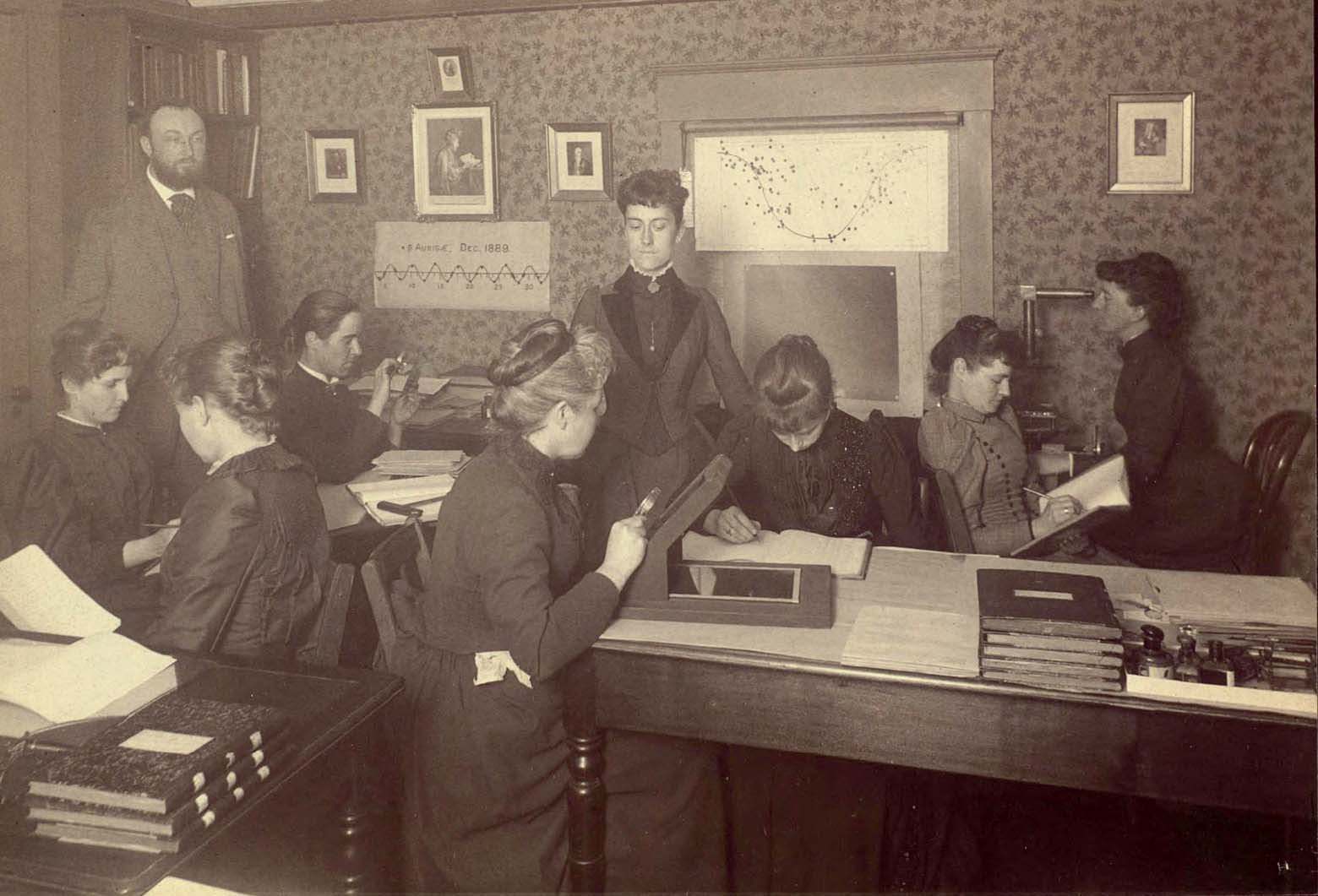
Fleming stands in the center, among her Observatory “computers.” Edward Pickering stands at far left.
Image courtesy of the Harvard University Archives/HUV 1210 (9-4)
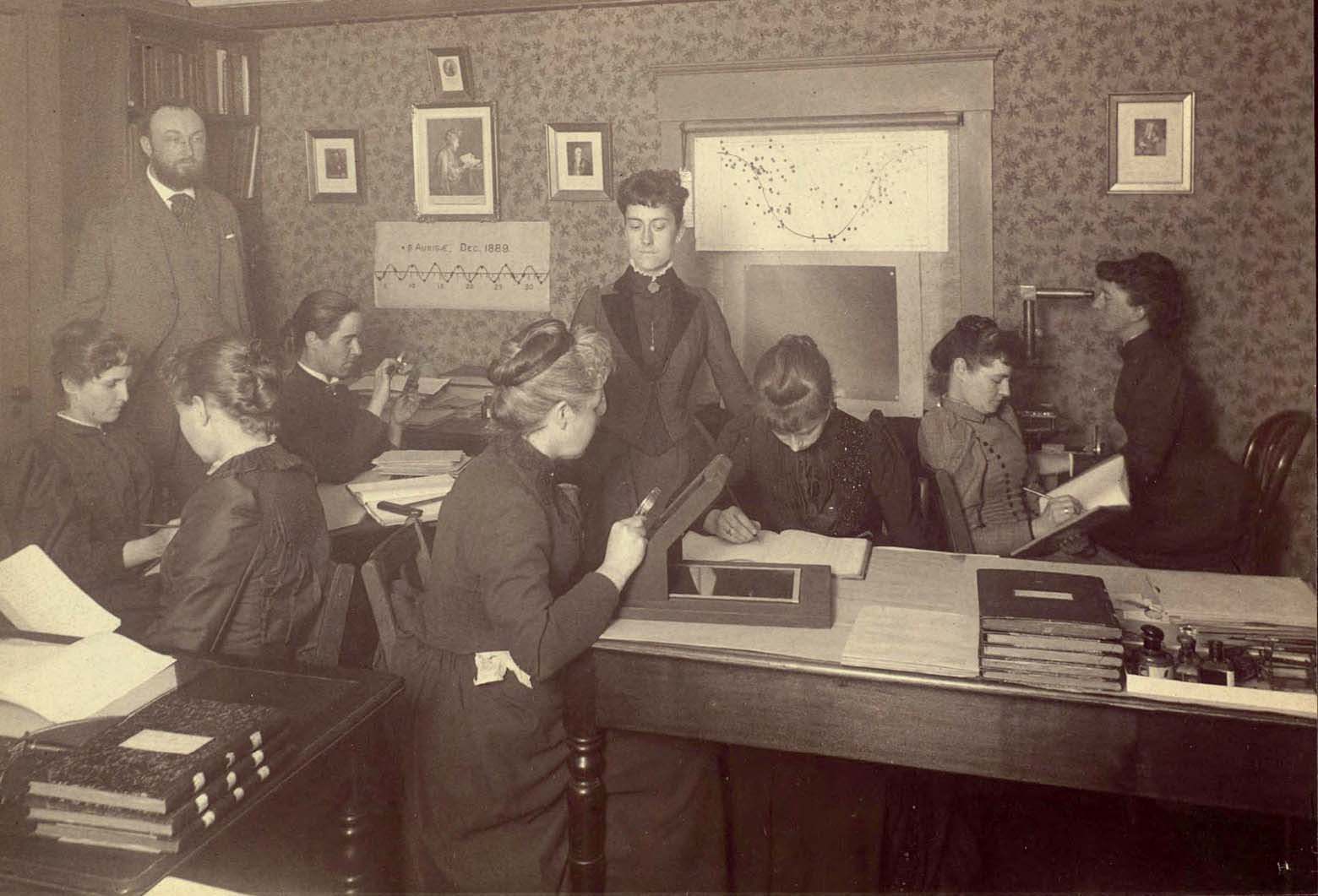
Fleming stands in the center, among her Observatory “computers.” Edward Pickering stands at far left.
Image courtesy of the Harvard University Archives/HUV 1210 (9-4)
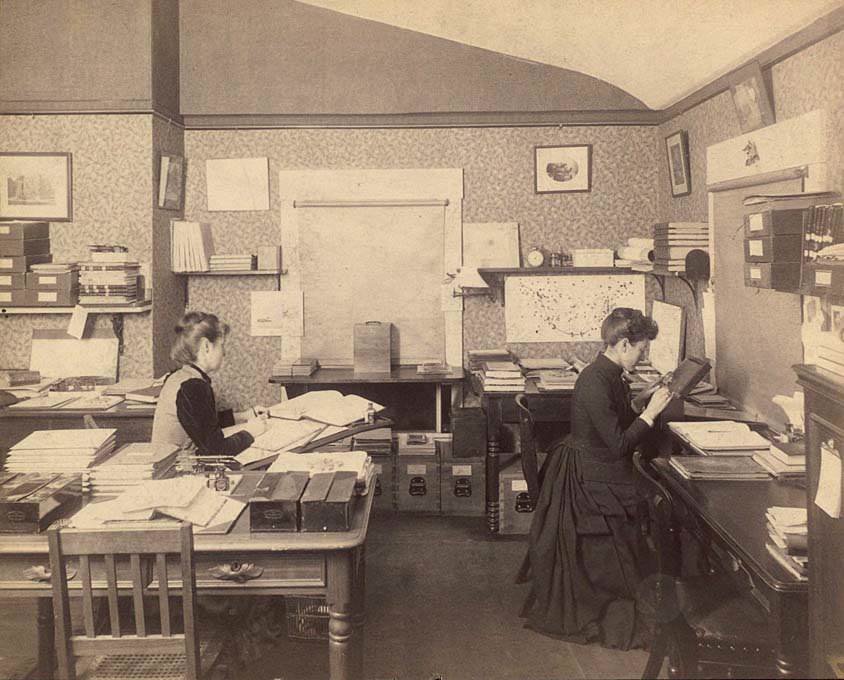
Fleming’s Observatory domain
Image courtesy of the Harvard University Archives/HUV 1210 (9-6)
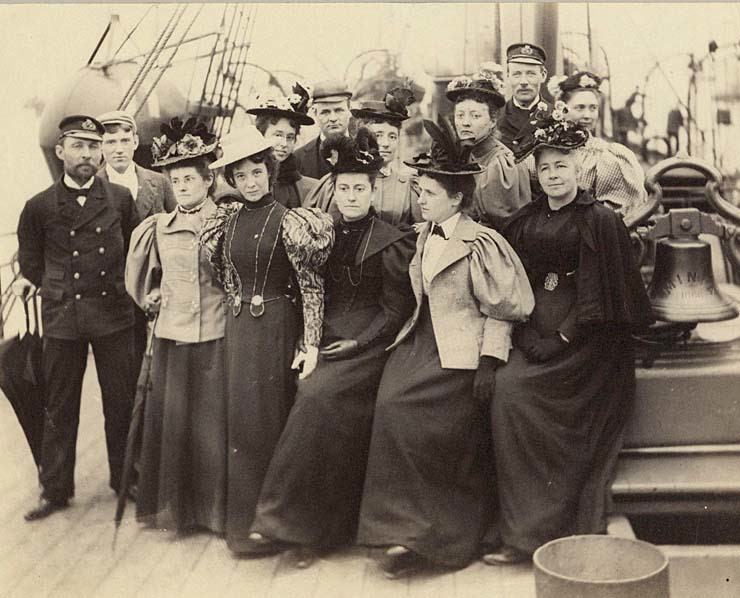
On a shipboard outing, Fleming (front row, center) is surrounded by her Observatory staff.
Image courtesy of the Harvard University Archives/UAV 630.271 (173)
Meanwhile, she advocated for more women in astronomy. Her 1893 article “A Field for Woman’s Work in Astronomy,” published in the journal Astronomy & Astrophysics, declared, “While we cannot maintain that in everything woman is man’s equal, yet in many things her patience, perseverance, and method make her his superior.” She also challenged the salary discrepancy between the sexes. (The base wage for female computers at Harvard was 25 cents an hour, far less than entry-level men earned.) In a journal entry made after confronting Pickering, she wrote: “I am immediately told that I receive an excellent salary as women’s salaries stand.…Does he ever think that I have a home to keep and a family to take care of as well as the men?…And this is considered an enlightened age!”
Work and family exerted counter-tugs. “My home life,” she wrote, “is necessarily different from that of other officers of the University since all housekeeping cares rest on me, in addition to those of providing the means to meet their expenses. My son Edward…knows little or nothing of the value of money and, therefore, has the idea but that everything should be forthcoming on demand.” Whatever complaints she harbored in private, though, the public Fleming engaged life with brio: hosting dinner parties, attending the theater, and cheering at Harvard football games.
In 1899, she became “Curator of Astronomical Photographs”: the first Corporation appointment ever made to a woman. Seven years later, she became the first American woman elected to honorary membership in England’s Royal Astronomical Society. Despite “trying illnesses,” she traveled to a California conference in September 1910 and then worked until her final hospitalization, for pneumonia, the following spring. Her own words provide a fitting epitaph: “Labor honestly, conscientiously, and steadfastly, and recognition and success must crown your efforts in the end.”
